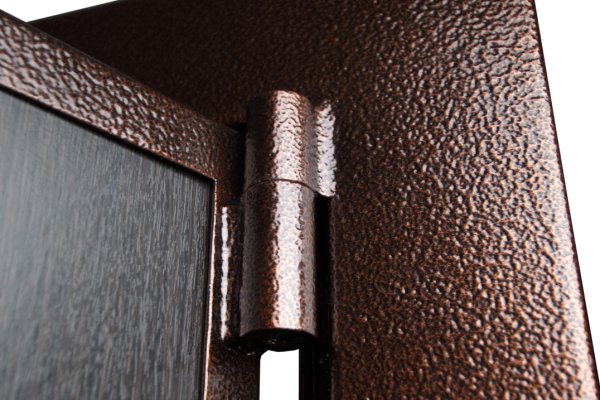Kra39at

После того, как найдете нужный, откройте его так же, как и любой другой. Onion - Bitcoin Blender очередной биткоин-миксер, который перетасует ваши битки и никто не узнает, кто же отправил их вам. Дизайн необходимо переработать, или навести порядок в существующем. Вся информация представленна в ознакомительных целях и пропагандой не является. Не становитесь «чайками будьте выше этого, ведь, скорее всего всё может вернуться, откуда не ждёте. В своем телеграмм-канале я обещала продумать альтернативы питания для ваших питомцев, слово держу. Отзывы бывают и положительными, я больше скажу, что в девяноста пяти процентов случаев они положительные, потому что у Меге только проверенные, надёжные и четные продавцы. p/tor/192-sajty-seti-tor-poisk-v-darknet-sajty-tor2 *источники ссылок http doe6ypf2fcyznaq5.onion, kracc / *просим сообщать о нерабочих ссылках внизу в комментариях! Onion - Burger рекомендуемый bitcoin-миксер со вкусом луковых колец. Подробнее: Криптовалютные кошельки: Биткоин, Ефириум, и другие малоизвестные кошельки Банковские карты: Отсутствуют! Этот сайт упоминается в сервисе микроблогов Twitter 0 раз. Onion - Ящик, сервис обмена сообщениями. Russian Anonymous Marketplace один из крупнейших русскоязычных теневых форумов и торговая площадка. Russian Anonymous Marketplace один из крупнейших русскоязычных теневых форумов и анонимная торговая. Из-за этого в 2019 году на платформе было зарегистрировано.5 миллиона новых аккаунтов. Epic Browser он с легкостью поможет Вам обойти блокировку. Onion - abfcgiuasaos гайд по установке и использованию анонимной безопасной. Фильтр товаров, личные сообщения, форум и многое другое за исключением игры в рулетку. Работает как на Windows, так и на Mac. Гидра будет работать или нет? Если kragl чуть привыкнуть.
Kra39at - Kra20at
UPD: похоже сервис умер. Всегда свежая ОМГ! Кратко и по делу в Telegram. Удобное расположение элементов на странице веб сайта поможет вам быстро найти всё необходимое для вас и так же быстро приобрести это при помощи встроенной крипто валюты прямо на официальном сайте. Особенно хочу обратить ваше внимание на количество сделок совершенное продавцом. Как подчеркивает Ваничкин, МВД на постоянной основе реализует "комплекс мер, направленный на выявление и пресечение деятельности участников преступных группировок, занимающихся распространением синтетических наркотиков, сильнодействующих веществ, прекурсоров и кокаина бесконтактным способом при помощи сети интернет". Программы для Windows и Mac Настольные способы блокировки чаще всего являются либо платными, либо сложными в обращении и потому не имеющими смысла для «чайников которым вполне достаточно небольшого плагина для браузера. Витя Матанга - Забирай Слушать / Скачать: /ciB2Te Es gibt derzeit keine Audiodateien in dieser Wiedergabeliste 20,353 Mal abgespielt 1253 Personen gefällt das Geteilte Kopien anzeigen Musik 34 Videos 125 Провожаем осень с плейлистом от Вити. Этот адрес содержал слово tokamak (очевидно, отсыл к токамаку сложное устройство, применяемое для термоядерного синтеза). Для этого просто добавьте в конце ссылки «.link» или «.cab». Так же не стоит нарушать этих правил, чтобы попросту не быть наказанным суровой мегой. 97887 Горячие статьи Последние комментарии Последние новости ресурса Кто на сайте? Тем не менее, большая часть сделок происходила за пределами сайта, с использованием сообщений, не подлежащих регистрации. Особенно, если дополнительно используете прокси, VPN. Безусловно, главным фактором является то, что содержание сайта должно быть уникальными и интересным для пользователей, однако, Вы можете узнать что то новое из опыта других. 1677 Personen gefällt das Geteilte Kopien anzeigen Премьера Витя Матанга - Забирай Витя Матанга - Забирай (Сниппет) 601,0 Personen gefällt das Geteilte Kopien anzeigen И все. После перехода вы увидите главную страницу ресурса. Подробности Автор: hitman Создано: Просмотров: 90289. Onion - Enot сервис одноразовых записок, уничтожаются после просмотра. Отдельного внимания стоит выбор: Любой, моментальный, предварительный заказ или только надёжный. Хостинг изображений, сайтов и прочего Tor. Onion - Скрытые Ответы задавай вопрос, получай ответ от других анонов. Onion заходить через тор. Залетайте пацаны, проверено! Onion - Stepla бесплатная помощь психолога онлайн. Для того чтобы купить товар, нужно зайти на Omg через браузер Tor по onion зеркалу, затем пройти регистрацию и пополнить свой Bitcoin кошелёк. Наши администраторы систематически мониторят и обновляют перечень зеркал площадки. Дизайн необходимо переработать, или навести порядок в существующем. Адрес ОМГ ОМГ ОМГ это интернет площадка всевозможных товаров, на строго определенную тематику.

Социальные кнопки для Joomla Назад Вперёд. Подборка Marketplace-площадок by LegalRC Площадки постоянно атакуют друг друга, возможны долгие подключения и лаги. Скорость работы friGate обеспечена тем, что он открывает заблокированные сайты из собственного заранее составленного списка. 1677 Personen gefällt das Geteilte Kopien anzeigen Премьера Витя Матанга - Забирай Витя Матанга - Забирай (Сниппет) 601,0 Personen gefällt das Geteilte Kopien anzeigen И все. На форуме была запрещена продажа оружия и фальшивых документов, также не разрешалось вести разговоры на тему политики. Этот сайт упоминается в сервисе микроблогов Twitter 0 раз. "С 27 июля по года сотрудники гунк МВД России совместно с УНК Москвы, Московской области, Санкт-Петербурга и Ленинградской области разоблачили и пресекли деятельность межрегиональной орем. Различные тематики, в основном про дипвеб. Одним из самых простых способов войти в Мегу это использовать браузер Тор. Требует включенный JavaScript. У каждого сайта всегда есть круг конкурентов, и чтобы расти над ними, исследуйте их и будьте на шаг впереди. Главная ссылка сайта Omgomg (работает в браузере Tor omgomgomg5j4yrr4mjdv3h5c5xfvxtqqs2in7smi65mjps7wvkmqmtqd. Отключив серверы маркета, немецкие силовики также изъяли и крупную сумму в криптовалюте. Форум Меге это же отличное место находить общие знакомства в совместных интересах, заводить, может быть, какие-то деловые связи. Даже если он будет выглядеть как настоящий, будьте бдительны, это может быть фейковая копия. По слухам основной партнер и поставщик, а так же основная часть магазинов переехала на торговую биржу. Silk Road (http silkroadvb5piz3r.onion) - ещё одна крупная анонимная торговая площадка (ENG). Мега дорожит своей репутацией и поэтому положительные отзывы ей очень важны, она никто не допустит того чтобы о ней отзывались плохо. Первое из них это то, что официальный сайт абсолютно безопасный. Решений судов, юристы, адвокаты. Хотя к твоим услугам всегда всевозможные словари и онлайн-переводчики. Russian Anonymous Marketplace один из крупнейших русскоязычных теневых форумов и анонимная торговая. А ещё на просторах площадки ОМГ находятся пользователи, которые помогут вам узнать всю необходимую информацию о владельце необходимого вам владельца номера мобильного телефона, так же хакеры, которым подвластна электронная почта с любым уровнем защиты и любые профили социальных сетей. Несмотря на заглавные буквы на изображении, вводить символы можно строчными. Английский язык. Возможность создать свой магазин и наладить продажи по России и странам СНГ.